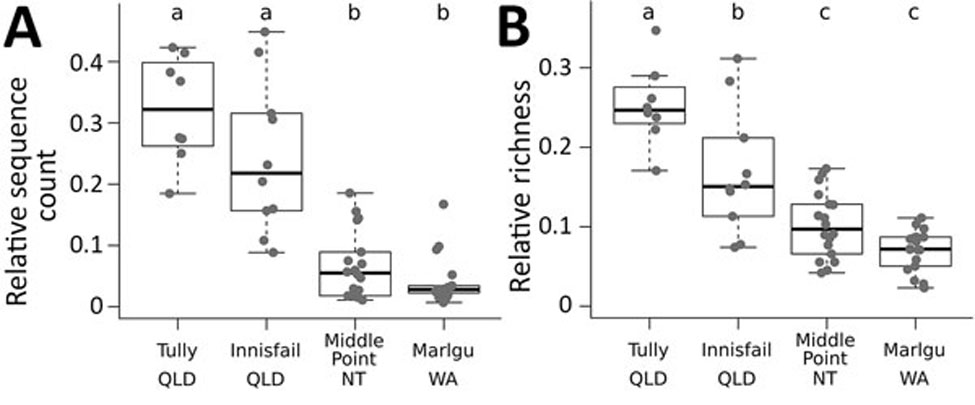Volume 25, Number 9—September 2019
Research Letter
Disease Exposure and Antifungal Bacteria on Skin of Invasive Cane Toads, Australia
Figure

Figure. Proportions of sequences (A) and richness (B) represented by Batrachochytrium dendrobatidis–inhibitory bacteria detected on the skin of invasive cane toads (Rhinella marina) at 4 sites in Australia, 2017. Points indicate values for individual toads. Box plots indicate the median (thick line), interquartile range (box), reasonable range of the data (dashed lines to the whiskers), and outliers. Letters above plots indicate significant differences from Tukey’s post hoc tests with p<0.05. QLD, Queensland; NT, Northern Territory; WA, Western Australia.
Page created: August 21, 2019
Page updated: August 21, 2019
Page reviewed: August 21, 2019
The conclusions, findings, and opinions expressed by authors contributing to this journal do not necessarily reflect the official position of the U.S. Department of Health and Human Services, the Public Health Service, the Centers for Disease Control and Prevention, or the authors' affiliated institutions. Use of trade names is for identification only and does not imply endorsement by any of the groups named above.